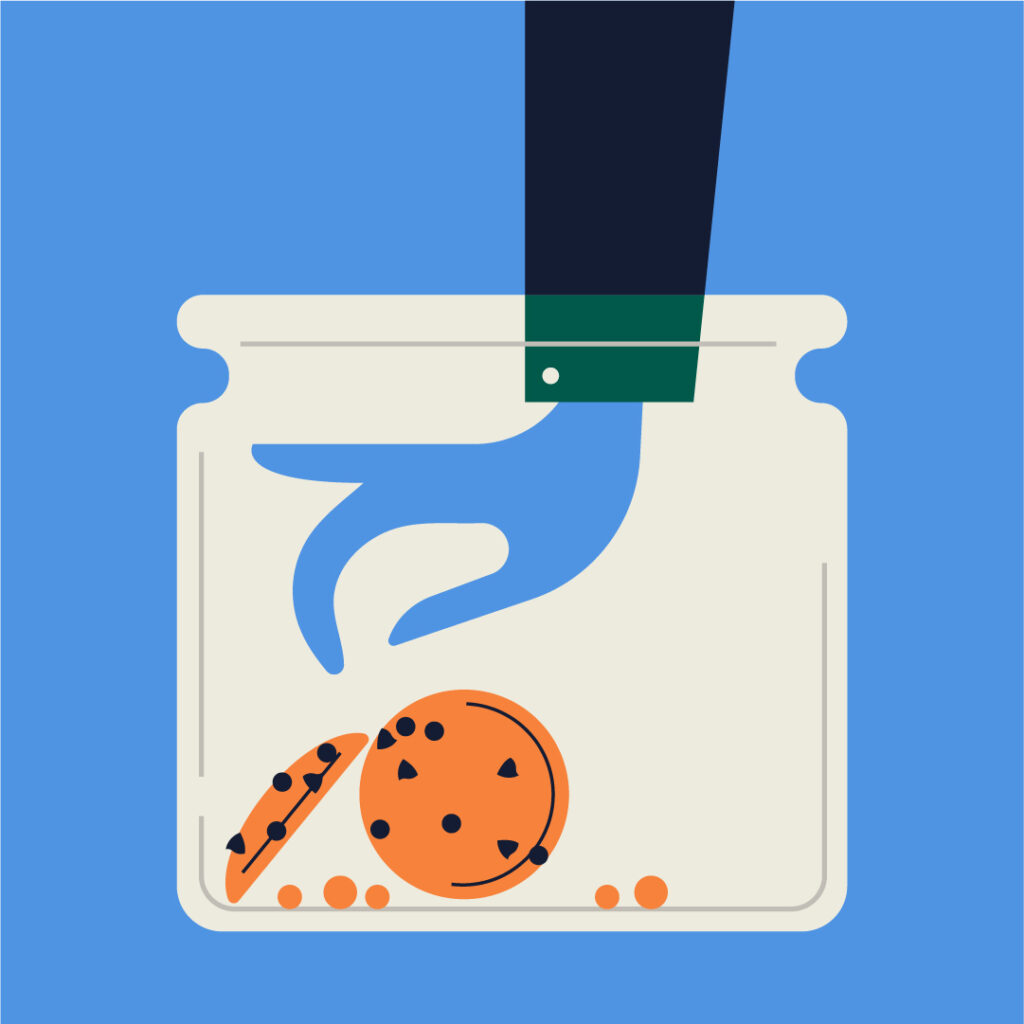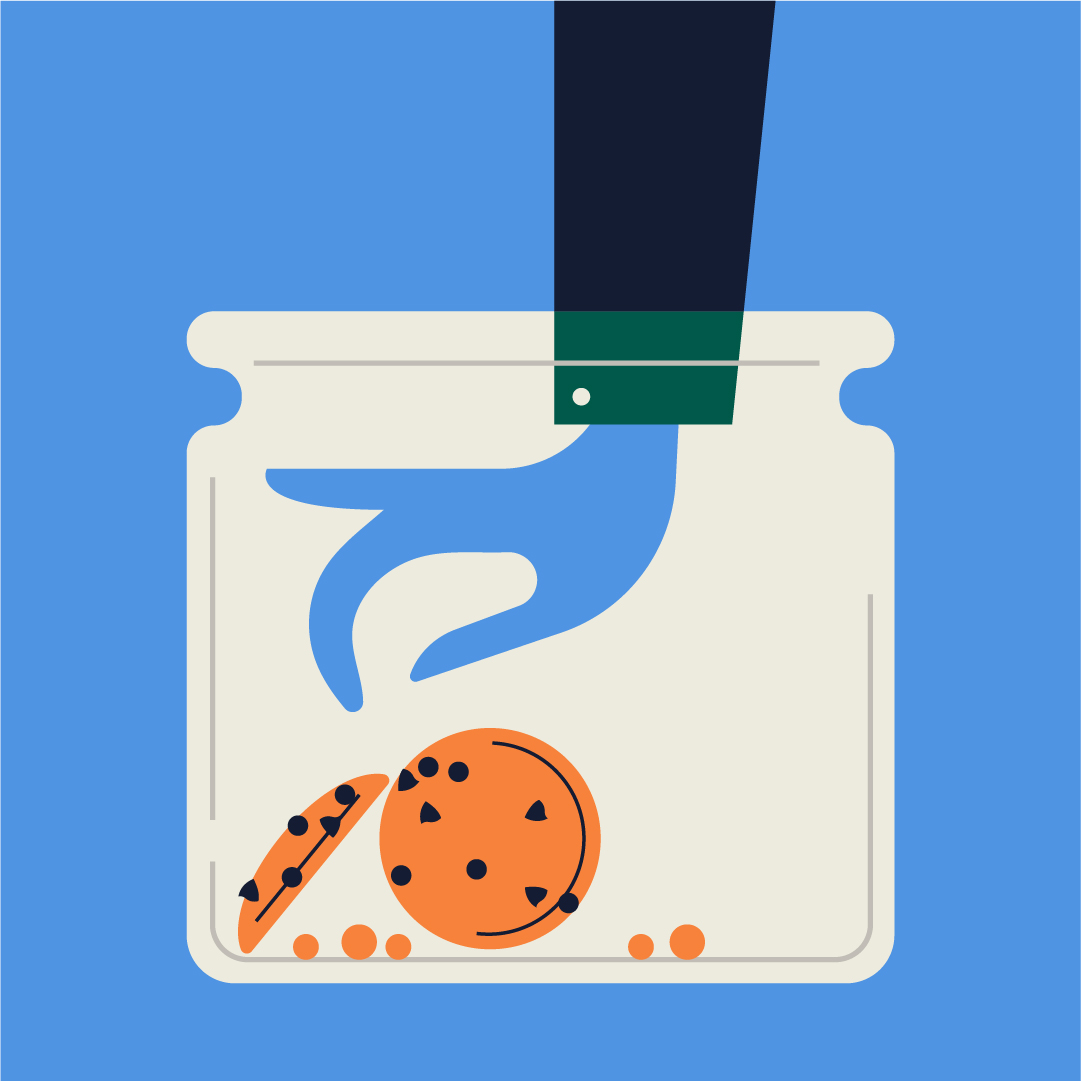Third-party cookies are here to stay. Now what?
In a shocking (or perhaps somewhat predictable) move, Google announced this week that they will no longer be deprecating cookies in the foreseeable future, but instead will offer users clearer choices on the Chrome browser’s use of cookies. On their blog, they stated, “Instead of deprecating third-party cookies, we would introduce a new experience in Chrome that lets people make an informed choice that applies across their web browsing, and they’d be able to adjust that choice at any time.” Google first announced that it would be removing cookies in 2019, and after multiple postponements and fun new acronyms like FLOC and PAIR, they no longer have plans to phase them out in the near future.
What does this announcement mean for the digital ecosystem?
On the heels of this announcement, not much has changed with how marketers operate today. While the urgency to evolve the digital ecosystem in preparation for Chrome’s cookie deprecation has been lifted, it is important to remember that the cookie environment is still fractured with Safari’s opt-out-first model, Intelligent Tracking Prevention, as well as Firefox’s ETP that limits third-party cookie tracking. Additionally, much of the groundwork marketers did to prepare for the cookie to crumble are still foundational steps to improve targeting and tracking. While there is no longer a hard cut-off date for cookies, their day as the de facto targeting and measurement tool has still passed. And their prevalence will likely still decline as their role shifts to supporting identity tracking rather than being the primary identifier.
While some concerns have been alleviated about what will happen in the short-term, in the long-term, this announcement is not expected to dramatically change the trajectory toward a privacy-first web, nor will it stop the momentum around a people-first versus device-first digital world. Here’s why:
- Many targeting operations that relied on third-party cookies, inclusive of many programmatic targeting mechanisms, are breathing a sigh of relief as cookie-based targeting will remain viable. That said, these organizations would be wise to continue to evolve their models as cookie penetration will continue to wane
- Basic and dynamic retargeting won’t be as critically impacted, and these programs will continue to scale and be effective for the foreseeable future
- Cookie-based measurement leveraging ad server or platform pixels will still be widely available and broadly used; however, the signals marketers rely on to evaluate performance will continue to weaken and become less reliable
- Identity mechanisms (like UID 2.0, Ramp ID, and ID4) continue to gain traction not because they are a replacement to cookies, but because they are better. Why? They are interoperable, persistent, and people-based, which will likely make cookies a support identifier rather than the core targeting mechanism in the future
What does this mean for marketers?
With the weight of this news, it’s likely marketers have questions about what this means for the work they’ve done to date to prepare for a cookie-free marketing landscape. Let’s answer some burning questions.
Do first-party data still matter?
First-party data acquisition should remain a priority for marketers. These data help marketers better understand audiences, aid segmentation, and enable stronger targeting in addition to seeding lookalikes and improving closed-loop measurement. Having a strong first-party data strategy is critical to effective marketing with or without cookie deprecation.
What about Custom Data Platforms (CDP)?
CDP use cases stretch far beyond overcoming digital targeting and measurement hurdles in the face of cookies. CDPs are strong tools that can ramp up a brand’s personalization strategy and marketing automation efforts and provide advanced targeting capabilities. Consult with your agency to learn if your business is right for a CDP and how to best select one. Your industry, use cases, and the size of your customer base are all critical inputs to determining if obtaining a CDP — and which one — is right for you.
Are on-site cookie consent forms still a priority?
YES! As a reminder, Safari and Firefox already highly limit cookies, and it is unclear what impact Chrome’s proposed changes will have on the availability of cookies. As marketers, it is our responsibility to be compliant, transparent, and accommodating to our customers, and offering choice gains trust for your brand and our industry.
Do I still need conversion APIs?
YES! Conversion APIs are superior to cookies in many ways. For example, they aren’t victim to ad blockers or cookie-less sessions. They are more lightweight on your site (which improves loading speeds), and in general, are more accurate and precise tools than cookie-based measurement. For our clients who have both conversion APIs and traditional pixels placed, we have seen a significant increase in pageview events and purchase events.
How will this affect measurement?
Legacy cookie-based measurement will still be intact and will likely be widely used; however, this type of measurement has (and will continue to have) flaws. This means it is still critical to deploy a measurement strategy for your digital campaigns and consider exploring the following measurement tools to gain enhanced performance insights:
- Multi-touch attribution (MTA) | The long-term viability of MTA is likely improved with cookies remaining a part of the ecosystem
- Media mix modeling (MMM) | Modeled measurement still offers the most comprehensive analysis of channel mixes as it can measure the impact of walled gardens and less trackable entities
- Brand and conversion lift studies | Understanding the effects of both perceptual and sales lift is a critical tool in demonstrating the impact of marketing
- Match market testing | Understand incremental performance through control and exposed market pairs. When deployed, ensure multiple factors are considered during market selection to limit volatility and potential contamination
For those who haven’t prepared for the end of the third-party cookie, you may feel relieved. But for those that feel your time has been wasted with Google’s decision — don’t be so hard on yourself. While it is true that this update is a major change in stance from Google, the impact of the new “choice first” Chrome is still unknown. Additionally, many of the recommendations to combat data loss — like developing a first-party data strategy — were rooted in foundational digital marketing strategies that should remain core to marketers’ plans. So, if you haven’t gotten started, the time is now.




